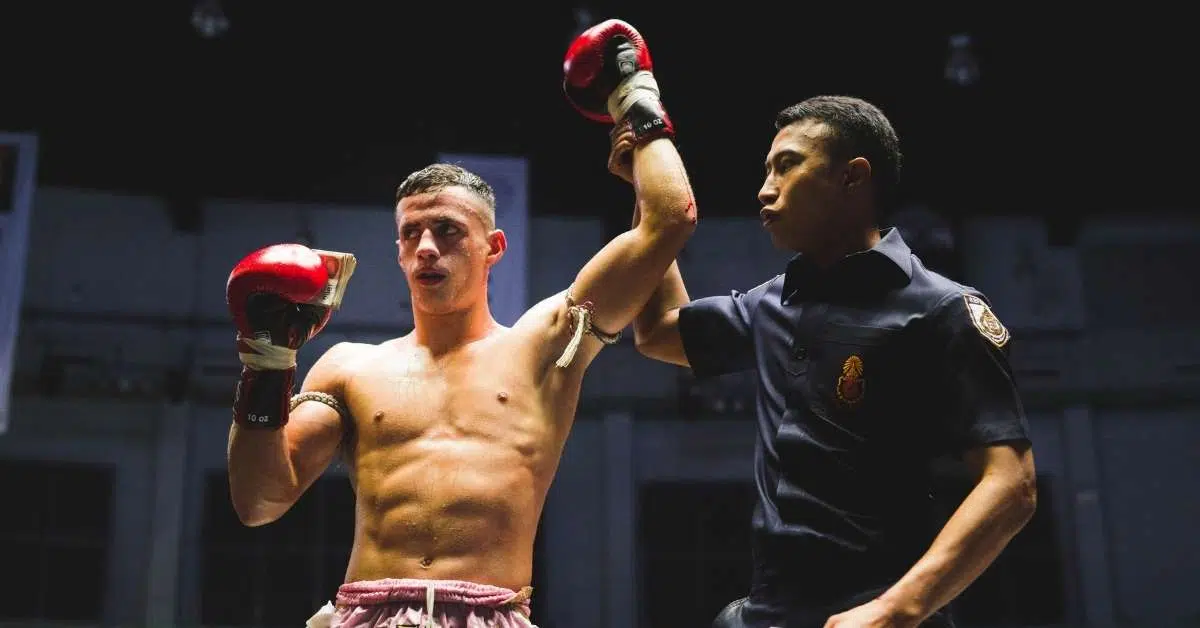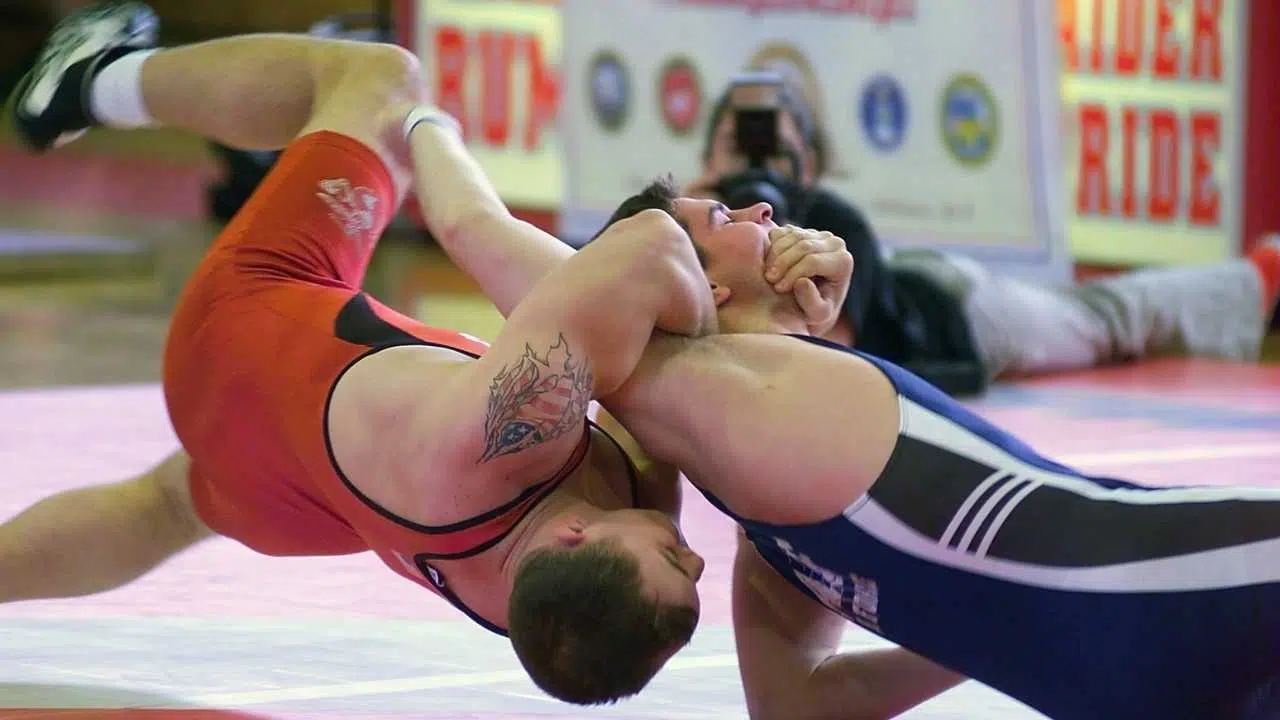
Pehlvani is a popular wrestling style developed in the 16th century Mughal Empire, practised primarily in India. Although not as popular as other wrestling styles, Pehlwani wrestling has a rich history and is integrated deeply into the culture of South Asia.
Also known as "Kushti", Pehlwani is conceptually very similar to catch wrestling. The rules allow holds both above and below the waist and execution of different throws, pins, and submission holds.
Though striking was allowed in its ancestor, malla-yuddha, modern Pehlwani practice does not allow kicks or punches.
This is just a brief explanation of the legendary Indian wrestling style. Read the rest of this article to learn more about its history, techniques, rules, and how it differs from other popular wrestling styles.
Let's dive in.
The History of Pehlwani Wrestling
The earliest records of Pelhwani wrestling go all the way back to the early days of Indian civilization. It is estimated that this was around 3,000 years ago, making Pehlwani one of the oldest wrestling styles.
Early history
Like many ancient martial arts, this form of wrestling emerged as a crucial aspect of physical training for soldiers and warriors. They used it as a hand-to-hand combat method to fight against armed or unarmed enemies. In contrast to striking, aggressive takedowns and submissions enabled them to neutralize the threat much faster.
During the Mughal era, Pehlwani became available to the public, with people practicing and competing all across the region. The system served not only as a form of combat training for soldiers but also as a source of entertainment.
The man who deserves a lot of credit for popularizing the sport during the 16th century was the first Mughal emperor, Babur, who was a wrestler himself. As a result of his love for wrestling, Pehlwani tournaments between skilled wrestlers became a part of various festivals and celebrations across the country.
Modern practice
Fast forward to today, and Pehlwani continues to rise, blending tradition with modern principles. Although a lot has changed, traditional practice has remained the same. Practitioners still follow the same traditional program and philosophy from medieval times, which helps preserve Pelhwani in modern times.
For instance, modern Pehlwani competitions adhere to old rules, with matches taking place in a traditional circular pit called "Akhara" covered in red sand.
Also, the sport has greatly impacted the development of modern grappling systems. Martial arts like shoot wrestling and catch wrestling involve many elements of Pehlwani, notably when it comes to physical preparation.
Pehlwani Wrestling Techniques and Concept Explained
Pehlwani is a complex grappling system that involves a wide range of techniques. It is considered a submission wrestling style, focusing on standup grappling, takedowns, pins, holds, and different submissions.
Techniques
The main objective in Pehlwani is to take the opponent down, establish a dominant position/control, and subdue the opponent using pins and holds. On the feet, the key is to use skill and strength to manipulate the opponent's weight to throw them off balance and execute a takedown. Once on the ground, the goal is to outwrestle the opponent to pin their shoulders on the ground.
For instance, the wrestlers employ various techniques, such as "Dhobi Pachhad" (shoulder throw) and "Baithak" (thigh hold), to gain the upper hand.
Rules of competition
- The bouts start with a traditional "Dangal" ceremony where both wrestlers demonstrate mutual respect.
- Match duration — The length of the matches may vary, but they are usually between 25 and 30 minutes long. If there is no winner, the match can be extended for 10–15 minutes.
- Pit area — a circular-shaped area that is around 14ft in diameter. The surface is a dirt floor covered in sand to make the ground softer.
- Ways to win - victory is achieved by pinning the opponent's shoulders to the ground or accumulating points through successful moves.
Tradition
Pehlwani is steeped in cultural and spiritual traditions. Wrestlers often adhere to a strict code of conduct that promotes humility and sportsmanship. The matches, conducted in a circular arena called an "Akhara," showcase athletic prowess and serve as a platform for cultural expression.
Pehlwani Diet
As per the Samkhya school of Hindu philosophy, the Pehlwani diet aligns with the three gunas:
- Sattva (calm/good)
- Rajas (passionate/active)
- Tamas (dull/lethargic).
Wrestling training and competition are intense and hard on your body, so Pehlwani focuses on consuming sattvic foods to provide their bodies with enough energy and nutrients.
For instance, Milk, ghee, and almonds are considered highly sattvic and, as such, are recognized as the holy trinity of the wrestlers' diet. They also often consume chickpeas sprouted overnight, seasoned with salt, pepper, and lemon, with the sprouting water deemed nutritious.
Protein is also an important part of the diet, building muscle mass and improving recovery. Thus, wrestlers also eat a lot of meat high in protein, often more than a pound of meat every day.
While meat is a common inclusion, they should avoid excessive spices and sour foods like chatni, achar, and chaat. Mild seasoning with garlic, cumin, coriander, and turmeric is acceptable.
Recommended fruits include apples, wood apples, bananas, figs, pomegranates, gooseberries, lemons, and watermelons, chosen for their sattvic nature. Orange juice and green vegetables are also good.
Pelhwani Training Regimen
Pelhwani training is unique because it embraces traditional training methods that have been used for over 150 years. Most wrestlers join the sport very young, often at the age of 6 and are sent to the traditional wrestling school called "akhara," where they participate in the training campus.
Talented wrestlers with what it takes to succeed often spend years in these academies without seeing their families.
Physical training, known as "Vyayam," focuses on building functional strength and agility and improving the range of motion. Thus, wrestlers do bodyweight exercises such as:
- Surya Namaskara — is a yoga practice also known as "salute to the sun" aimed to improve flexibility and agility.
- Shirshasana — is another yoga exercise.
- Danda — body weight push-ups
- Bethak — bodyweight squats
- Gada — exercises using a heavy mace to build strength.
- Dhakuli — a group of exercises that includes rope climbing, log pulling, and running.
A unique aspect of Pehlwani training is the emphasis on "Akharas," training pits where wrestlers practice. The pit floor is often sprinkled with mud, oil, or buttermilk to make the dirt softer, impacting movement. However, the soft ground also adds resistance, improving wrestlers' balance and stability.
Following is a typical training day in the life of a Pehlwani wrestler:
- 3 am — push-ups and squats (up to 4000), 5-mile run, swimming, stone, and sandbag lifting
- 8 am — practitioners engage in sparring that lasts 3 hours or 25 wrestling matches without a break.
- 11 am — massage and rest
- 4 pm — another 2 hours of wrestling sparring
- 8 pm — rest and sleep

WARRIOR STRENGTH PROGRAM
How Effective Is Pehlwani Wrestling For Self-Defense?
Pehlwani wrestling can be effective for self-defense due to its emphasis on practical grappling techniques and a realistic approach to training.
Each day, wrestlers spend hours sparring against the fully resisting opponent. They do fight simulations, which train their muscle memory, reactions, and fighting instincts. So, once in a real fight, they would rely on their instincts to spot the patterns and execute techniques without thinking about it.
Next, they also do grueling cardio and strength workouts. They run, swim, climb ropes, and do different bodyweight strength workouts. As a result, their balance and stability are superior, and they can easily overpower just about every human being.
All of this is crucial for self-defense situations that involve a lot of grabbing and pulling at close range. Pehlwani wrestlers can use this to their advantage to quickly secure a strong grip and execute one of many techniques from their arsenal.
Also, bear in mind that the majority of people don't know how to grapple. Most can block or duck under a punch and counter this attack. However, grappling is all about leverage, technique, and weight distribution, and it takes years for an individual to learn how to defend against these attacks.
Lastly, Pehlwani techniques are safe to apply. Hitting the attacker with a power punch or kick can result in serious injuries. It can even be lethal. Wrestling is safer as it enables you to rely on technique to break their balance and take them down to the ground, and you can hold them there without much resistance.
Pehlwani vs. Freestyle Wrestling
The main difference between Pehlwani and freestyle wrestling is in the rules, cultural origins, and attire fighters wear. These are the two separate styles, each with its own unique rules and techniques, and the following is a detailed explanation of all the key differences.
Cultural origin
Pehlwani is deeply connected to ancient Indian culture and philosophy. It focuses not only on physical training but also on spiritual and mental aspects.
Originating in the United States and Europe, freestyle wrestling is more modern and has a global presence as an Olympic sport. It focuses primarily on physical athleticism, technical skill, and competition.
Rules and scoring
Matches often occur in a circular pit (Akhara) on dirt ground. Victory is achieved by pinning the opponent's shoulders to the ground or accumulating points through successful throws and holds. The length of the matches is from 25 to 30 minutes.
Freestyle wrestlers compete on the modern mats in the modern arenas. They score points by taking their opponent down to the mat (2 points), exposing their opponent's back to the mat (2–4 points), and escaping (1 point) or reversing positions (1 point).
Attire
Pehlwani wrestlers typically wear loincloths (langot) during matches. It is a one-piece garment wrapped around the waist or kept in place by a belt. Freestyle wrestlers wear tight-fitting, one-piece singlets that provide a standardized and modern appearance.
Pehlwani wrestlers also oil themselves before a match and cover in dirty to create more friction between their bodies.
Training
Pehlwani training involves a combination of traditional exercises like Dand Baithak and Gada. Wrestlers follow a strict training regimen developed 150 years ago, focusing on mental discipline and spiritual well-being.
On the other side, freestyle wrestling embraces a modern approach to training. It primarily focuses on strength, agility, technique, and intense match preparation.
Who Are The Most Famous Pehlwani Wrestling Fighters?
Some of the most famous Pehlwani wrestlers include:
- Gama Pehlwan (Ghulam Muhammad) — is widely regarded as one of the greatest Pehlwani wrestlers in history. Coming from Pakistan, it is believed that Gama holds an undefeated record of 5,000 wins and 0 losses.
- Dara Singh — is a well-known figure both in Pehlwani and the entertainment industry. He became famous while competing as a wrestler and later transitioned to acting, where he became a Bollywood star. Singh deserves a lot of credit for popularizing the sport in India.
- Bholu Pahalwan — is a famous wrestler from Pakistan known for dominating some of the most famous wrestlers of his generation. He represented Pakistan in international competitions and contributed to the sport's popularity in the country.
- Khashaba Dadasaheb Jadhav — is mainly known as an Olympic bronze medalist in freestyle wrestling (1952). But he also had a strong background in Pehlwani.
Pehlwani 101
Pehlwani is a testament to the rich history of Indian culture, history, and tradition. Despite the evolution of technology, which greatly impacts other wrestling styles, Pehlwani remains deeply connected to its traditional roots. As such, the practice has survived and is only getting more popular.
On the one hand, the technical aspect of the system has evolved, and athletes are continuously improving. But on the other, they still do the same workouts as 150 years ago, follow a similar diet, and compete in a dirty pit just like their ancestors. Many people from the Western world are fascinated with this unique mix of traditional principles and advanced wrestling, which enables Pehlwani to spread globally.
.png)


